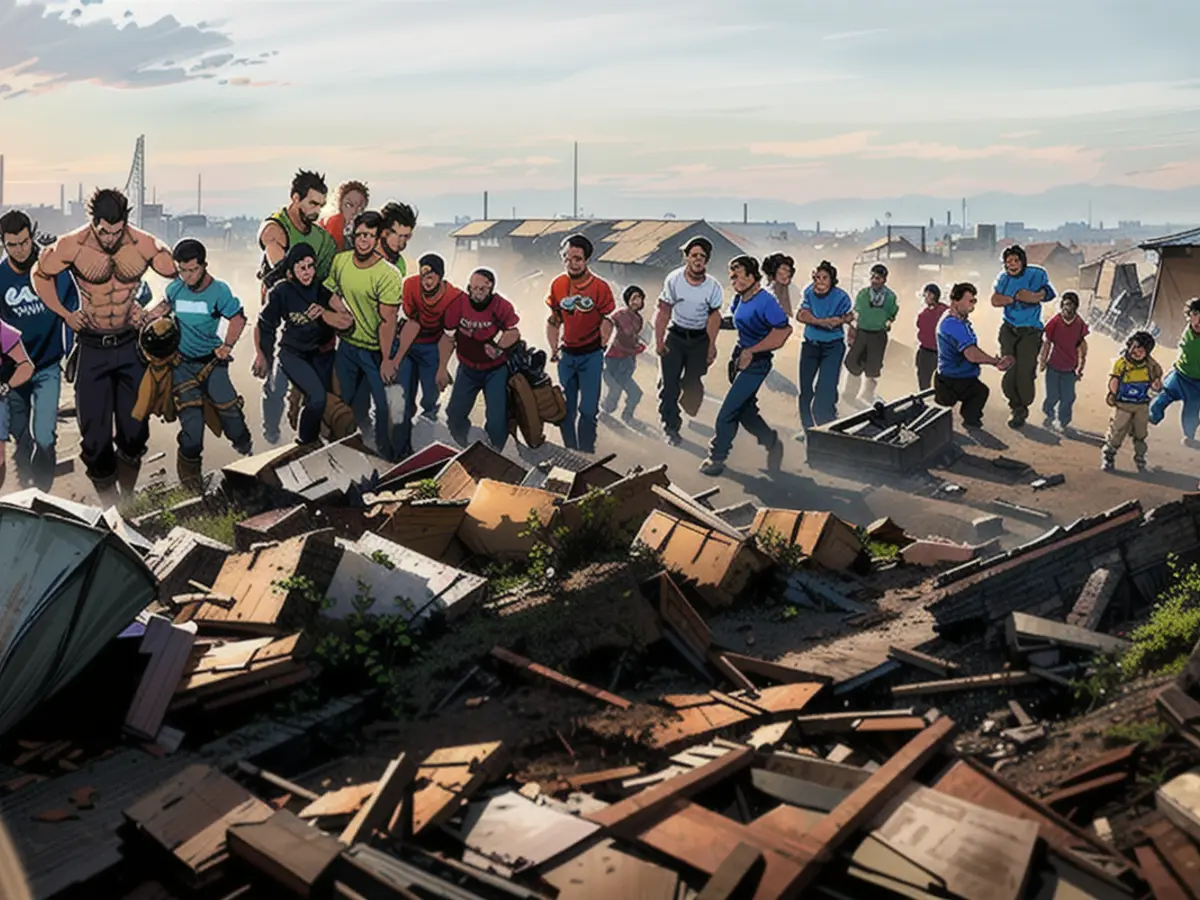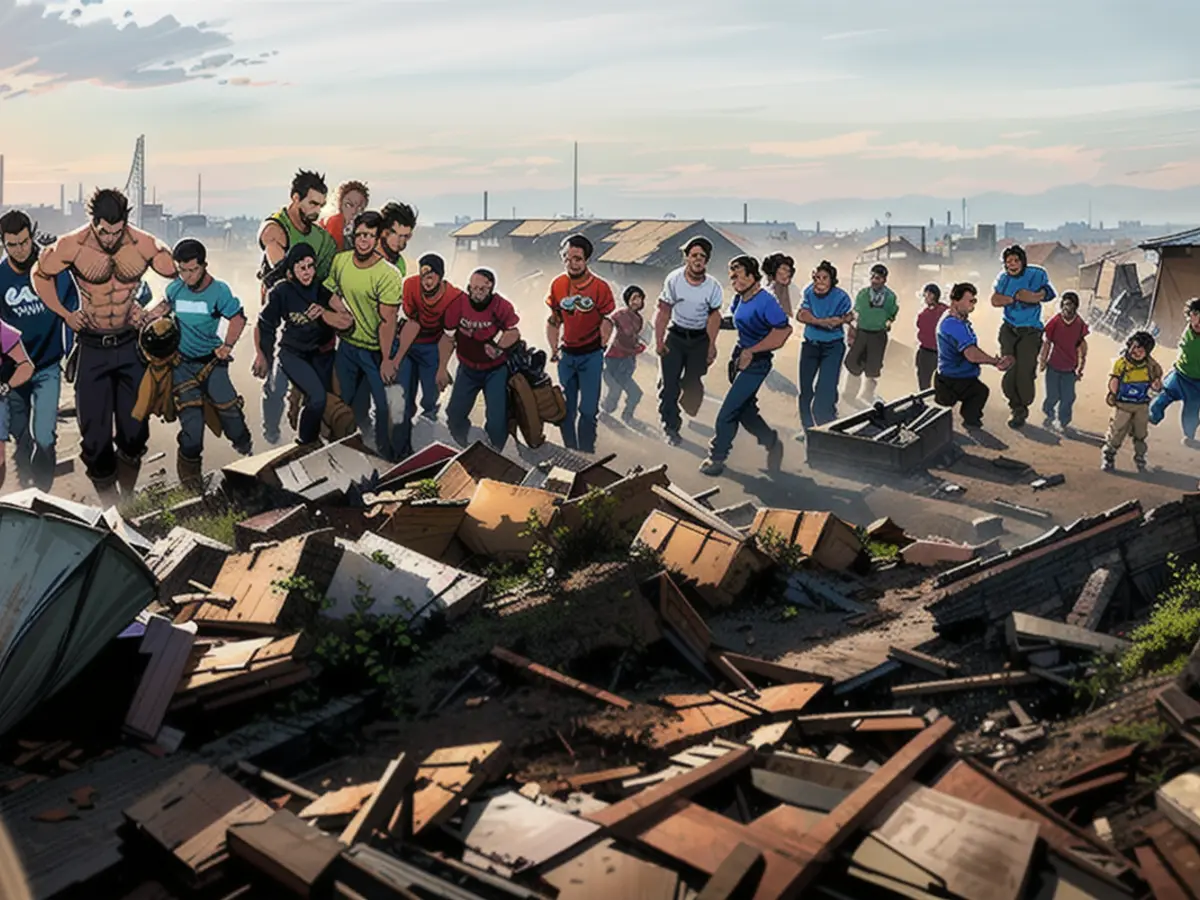Nearby explosion in Gaza camp: Possibility of stored explosives within the protection zone?
In the southern region of Gaza Strip, an Israeli airstrike has sparked global controversy. The Israeli prime minister, Benjamin Netanyahu, admits to a "grievous mistake." However, the Israeli military denies launching attacks into the "humanitarian buffer zone." But what transpired?
Following an Israeli airstrike on May 26 in the Gaza Strip, at least 45 people were killed and hundreds injured. This military operation as part of the Rafah offensive has caused widespread outrage not just in the Arab world but also across the globe. Even Israel's close allies, such as the United States, have expressed shock.
The airstrike was allegedly meant to target high-ranking Hamas officials. Nevertheless, it's clear a temporary shelter for Palestinian internally displaced persons was also hit. The tent camp burned after the bombing, with casualties including many women and children. International aid organizations like the Red Crescent and Doctors Without Borders criticized the Israeli military, accusing them of attacking a protected civilian establishment in a designated safe zone.
The details of the incident remain unclear. The most recent accounts suggest the camp or its surroundings were hit by at least one Israeli missile just a few hours after Hamas rockets provoked the first significant aerial attacks in Tel Aviv and other Israeli cities since January.
Following the impact, a massive fire erupted. Early images from the fateful night depicted extensive fires and chaotic, harrowing scenarios: Helpers pulled lifeless bodies from the flames. The majority of the area appeared destroyed, burnt, and entirely ravaged.
The following day, photographs and video recordings revealed only charred terrain, ruined personal belongings, twisted metal parts, and burnt-out cars at the site of the accident. Rescue personnel reported that hundreds sustained injuries with shrapnel wounds, bone fractures, and severe burns.
The exact location of the incident remains unknown: The targeted camp was reportedly the "Kuwaiti Peace Camp 1," a temporary shelter for internally displaced Palestinians in the Gaza Strip backed by Kuwaiti aid. The exact point of impact and how it could cause such extensive damage is still uncertain.
Satellite images reveal the camp was constructed only a few days after the turn of the year between December 31, 2023, and January 10, 2024. Located on an open hill not far from the city limits of Rafah, the camp covered an area roughly equivalent to a football field.
The camp's position should have been known to the Israeli military, since it was specifically fenced off with corrugated steel sheets and tent poles. The makeshift camp was situated east of the Tal al-Sultan neighborhood, near a prominent United Nations facility. Just 200 meters separated the camp from the outer UN walls, while it was 600 meters away from the city limits at Tal al-Sultan and two and a half kilometers from the Rafah city center.
The Israeli airstrike took the citizens of Rafah by surprise, especially since their focus was on combating remaining Hamas strongholds in more southern territories. The camp, though falling outside the regions designated for evacuation, was also certainly outside the announced "humanitarian zone" at Al-Mawasi.

The precise strike location cannot be pinpointed from the satellite images. So far, no indisputable proof has surfaced from the photos of remaining photographers in the Gaza Strip. It remains undetermined if the Israeli bombing targeted structures within or near the camp.
It's also uncertain how the resulting explosions and the devastating fire emerged. Nonetheless, it's agreed that the trigger was an Israeli assault. Israeli combat aircraft "conducted an air strike in the area of Rafah based on intelligence information," the military stated the following day.
But something unforeseen must have transpired during the strike. The amount of ammunition used - initially estimated at 17 kilograms, later increased to 34 kilograms - was allegedly insufficient to have caused the destruction and fires observed.
The military may have employed air-to-ground rockets with smaller warheads during the operation. In previous incidences, Israeli forces had used such ammunition to attack senior Hamas members in the middle of traffic.
"We are investigating all potential causes" stated a spokesperson for the Israeli military regarding the investigation. One hypothesis might involve secondary explosions resulting from devices on the ground other than the intended targets. Video footage from the night of the incident suggests typical secondary explosions. Yet, several vehicles were also on fire, possibly resulting in individual detonations.
Leading up to the intended air strike, "a series of steps were taken to lessen the risks for civilians" stressed the Israeli military. The target area was overseen from the air, with multiple rounds of overlapping intelligence inputs. Netanyahu later referred to it as a "tragic error" and ordered a comprehensive investigation.
The refugee camp was completely wiped out a few days after the catastrophic bombing. New, crisp satellite photos reveal that not just the shelters adjacent to the charred camp have vanished, but almost all the tents in the nearby region have also been eliminated.
The horrible attack highlights the significant dangers for the Palestinian residents that Israel poses by participating in military confrontations with Hamas in the densely crowded Gaza Strip. The UN's Secretary-General, António Guterres, strongly scolded the overwhelming air raid. "I deplore Israel's actions, which led to the death of numerous innocent civilians who were merely seeking shelter from this lethal battle," Guterres said. There's no safe haven for Palestinians in Gaza. "This nightmare must come to an end."


Read also:
- Year of climate records: extreme is the new normal
- Precautionary arrests show Islamist terror threat
- UN vote urges Israel to ceasefire
- SPD rules out budget resolution before the end of the year
- The United Nations and international aid organizations, including the Red Crescent and Doctors Without Borders, have accused the Israeli military of attacking a protected civilian establishment in the Gaza Strip, specifically mentioning a temporary shelter for Palestinian internally displaced persons in the "humanitarian buffer zone."
- Amidst the Israeli-Palestinian conflict, there have been calls for map data infographics to be utilized in order to better understand the geographical complexities of the Gaza Strip, including the locations of military targets, settlements, and protected civilian areas.
- Following the Israeli airstrike in the Gaza Strip, there have been questions raised about the presence of stored explosives within the "protection zone," a concern that is particularly relevant in the context of the ongoing Israel war and the potential for secondary explosions caused by military operations.
Source:








